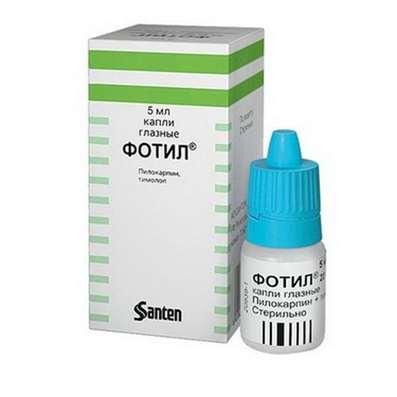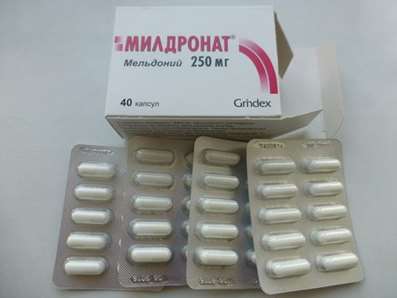Instruction for use: Betaxolol
I want this, give me price
Trade name of the drug – Lokren; Betoptic; Betoftan; Betoptic C; Xsonef®; Betaxolol; Betacam; EU Betalmiñ; BC Xonef®; betaxolol hydrochloride; Optibetol®; Betaxolol-SOLOfarm; Betaxolol SOLOfarm-UD
The Latin name of the substance Betaxolol
Betaxololum (genus. Betaxololi)
Chemical rational name: 1- [4- [2- (cyclopropylmethoxy) ethyl] phenoxy] -3 - [(1-methylethyl) amino] -2-propanol (as hydrochloride)
Gross formula C18H29NO3
Pharmacotherapeutic group: Beta-blockers
Ophthalmic solutions
The nosological classification (ICD-10)
H40.1 Primary open-angle glaucoma: open-angle glaucoma; Open-angle glaucoma; Primary glaucoma; pseudoexfoliation glaucoma; Elevated IOP
I10 Essential (primary) hypertension: hypertension; Arterial hypertension; Arterial hypertension crisis course; Essential Hypertension; Essential hypertension; Essential hypertension; Essential hypertension; Essential hypertension; Primary hypertension; Arterial hypertension, complications of diabetes; The sudden increase in blood pressure; Hypertensive disorders of blood circulation; hypertensive condition; hypertensive crises; arterial Hypertension; malignant Hypertension; Hypertonic disease; hypertensive crises; accelerated hypertension; malignant hypertension; The aggravation of hypertensive disease; Transient hypertension; Isolated systolic hypertension
I15 Secondary hypertension: Arterial hypertension, complications of diabetes; hypertension; The sudden increase in blood pressure; Hypertensive disorders of blood circulation; hypertensive condition; hypertensive crises; hypertension; arterial Hypertension; malignant Hypertension; hypertensive crises; accelerated hypertension; malignant hypertension; The aggravation of hypertensive disease; Transient hypertension; hypertension; Arterial hypertension; Arterial hypertension crisis course; renovascular hypertension; Hypertension symptomatic; Renal hypertension; Renovascular hypertension; renovascular hypertension; Symptomatic hypertension
I20 Angina [angina]: Heberden disease; Angina pectoris; The attack of angina pectoris; recurrent angina; Spontaneous angina; Stable angina pectoris; Angina rest; Angina progressing; Angina mixed; Angina spontaneous; stable angina; Chronic stable angina; Angina Syndrome X
CAS code 63659-18-7
Description of Betaxolol
Betaxolol hydrochloride - a white crystalline powder. Soluble in water, ethanol, methanol and chloroform.
Pharmacological Properties of Betaxolol
Pharmachologic effect - antianginal, hypotensive, antiarrhythmic, antiglaucoma.
Blocks beta1-adrenergic receptors, deprived of its own sympathomimetic activity, has an insignificant membrane-stabilizing activity. It reduces the sensitivity of peripheral tissues to catecholamines, inhibits central sympathetic impulses, inhibits renin secretion. It has a negative chrono, ino, Drome and batmotroponoe action. Decreases in heart rate, decreases contractility and myocardial oxygen demand (antianginal effect) inhibits automatism sinoatrial node and the occurrence of ectopic foci in the atria, the AV connection. The effect develops in 2-3 hours after ingestion, reaches a maximum after 3-4 hours and lasts 12-24 hours to stabilize when taken regularly for 1-2 weeks. It prevents the increase in blood pressure in response to exercise or stress.
Effective antihypertensive treatment is accompanied by a decrease in left ventricular mass and improvement of some indicators of its contractile capacity. 75% of patients with mild to moderate hypertension respond well to monotherapy. With prolonged use was not significantly alter lipid metabolism, excretion of sodium. In patients with concomitant asthma and chronic bronchitis practically does not reduce lung function.
The use as eye drops accompanied by a decrease in intraocular pressure (both normal and high) by reducing the production of intraocular fluid. It does not cause miosis, spasm of accommodation, night blindness and the veil before the eyes of the effect (as miotics).
The effect at 30 minutes after application, reaches a maximum at 2 h continues 12 hours. Intraocular pressure decreases by 25%, is effective in 94% of cases.
When ingestion rapidly and completely (95%) absorbed from the gastrointestinal tract (regardless of the meal). Bioavailability - 80-95%. Cmax in plasma observed after 3-4 h, when using eye drops -. After 2 hours Linking plasma proteins does not exceed 50%. Equilibrium concentration in the blood is achieved after 5-7 days of regular admission. T1 / 2 -. 14-22 hours, is metabolized in the liver to inactive metabolites (85%) excreted in the urine (more than 80%, of which 15% - unchanged). If any of the functions of the liver T1 / 2 is extended by 33% (dose adjustment is required); in violation of renal function T1 / 2 - 2 times (need to dose reduction), in elderly patients is 30 hours Passes through GEB, placental barrier (possible development of hypoglycemia, bradycardia, hypotension, difficulty in breathing in the fetus and newborn).. Penetrates into breast milk.
At doses of 72 times (rats) and 90 times (mice) for exceeding the maximum recommended human (MRDC), does not have a carcinogenic effect. It does not exhibit mutagenic activity towards mammalian cells and bacteria. When administered to rabbits and rats has embryotoxic effects (increase in performance postimplantation deaths and cases of bone resorption) at doses respectively 54 and 300 times higher than MRDCH. When the rats were administered doses (up to 600 MRDCH) exhibits not only embriotoksicskie, and teratogenic properties (increase in the incidence of skeletal anomalies and internal organs).
Application of the substance Betaxolol
Tablets: hypertension, angina of effort; akathisia caused by antipsychotic drugs.
Eye drops: open-angle glaucoma, ocular hypertension, a condition after laser trabeculoplasty, long-term antihypertensive therapy after surgical ophthalmologic intervention.
Contraindications for Betaxolol
Hypersensitivity, sinus bradycardia (less than 45-50 u. / Min), a syndrome sick sinus, AV block II-III degree, hypotension (Sad below 100 mm Hg. Art.), Cardiogenic shock, severe and refractory to the treatment of severe heart failure, severe obstructive respiratory failure.
Restrictions to application
Chronic obstructive pulmonary disease, unstable angina, a tendency to bradycardia, AV block I degree, the peripheral blood circulation, diabetes in the stage of decompensation, hypoglycemia, pheochromocytoma, liver and kidney function, hyperthyroidism, muscle weakness, elderly, children's age (safety and efficiency is not defined).
Pregnancy and breast-feeding
Perhaps if the expected effect of therapy outweighs the potential risk to the fetus.
Category effects on the fetus by FDA - C.
At the time of treatment should stop breastfeeding.
Side effect of Betaxolol
From the nervous system and sensory organs: asthenia (7.1%), headache (6.5%), dizziness (4.5%), drowsiness (2.8%), insomnia (1.2%), anxiety (0.8%), depression (0.8%), impaired concentration, nightmares, syncope, stupor, hallucinations, amnesia, emotional lability, sensitivity disorders, paresthesia, neuralgia, neuropathy; pain and tinnitus, vestibular disorders, partial hearing loss, tremors.
From the urogenital system: impotence (1.2%), dysuria, oliguria, proteinuria, edema, cystitis, renal colic, loss of libido, irregular menstruation, pain and fibrocystic breast changes breast (in women), prostate, Peyronie's disease .
From the digestive tract: dyspepsia (4.7%), diarrhea (2%), nausea (1.6%), dry mouth, anorexia, dysphagia, vomiting, constipation, abdominal pain.
From the respiratory system: upper respiratory tract infection (2.6%), dyspnea (2.4%), chest pain (2.4%), pharyngitis (2%), rhinitis (1.4%), sinusitis , cough, dyspnea, bronchospasm, respiratory failure.
Cardio-vascular system and blood (blood, hemostasis): bradycardia (8.1%), symptomatic - 0.8%, palpitations, AV block, hypotension, hypertension, violation trophism infarction, myocardial infarction, heart failure, exacerbation of intermittent claudication, thrombosis, anemia, leukocytosis, thrombocytopenia, purpura.
From the musculoskeletal system: arthralgia (3.1%), tendinitis, myalgia.
For the skin: rash (1.2%), alopecia, eczema, erythema, exacerbation of psoriasis, hypertrichosis, prurigo.
Other: allergic reactions, increasing the concentration of LDH, liver enzymes (AST, ALT), acidosis, hypercholesterolemia, hyperglycemia, hyperlipidemia, hyperuricemia, hypokalemia, hypothermia, body weight change, withdrawal syndrome.
When using the eye drops: lacrimation (immediately after instillation), discomfort or foreign body in the eye, dry eyes, blurred vision, pain, photophobia, anisocoria, decrease sensitivity or spotted coloration of the cornea, keratitis, erythema, itching, systemic reactions.
Interaction
Increases (mutually) the likelihood of violations of automaticity, conduction and contractility of the heart on the background of amiodarone, diltiazem, verapamil, quinidine drugs and the risk of hypotension cardiac decompensation - against the background of dihydropyridine calcium channel blockers, especially in patients with latent cardiac insufficiency. NSAIDs, corticosteroids, estrogens, enveloping and antacids weaken hypotensive effect; tricyclic antidepressants (imipramine) - increase (development of orthostatic hypotension). Potentiates the effect of non-depolarizing muscle relaxants, lidocaine inhibits the metabolism in the liver. Cimetidine and phenothiazines increase the concentration in plasma. With simultaneous systemic and local (in the form of eye drops) application of beta-blockers may develop additive effects (on intraocular pressure or the system).
Overdose
Symptoms: dizziness, bradycardia, arrhythmia, hypotension, congestive heart failure, bronchospasm, hypoglycemia, seizures, severe cases - collapse.
Treatment: gastric lavage and the appointment of absorbent; symptomatic treatment: atropine (w / 2.1 mg), beta-agonists (isoprenaline), sedatives (diazepam, lorazepam), cardiac (dobutamine, dopamine, epinephrine, norepinephrine), drugs, and other drugs glucagon. With heart block transvenous pacing is possible. Hemodialysis is ineffective.
Routes of administration
Inside, conjunctival.
Precautions for substance Betaxolol
Treatment is carried out under regular medical supervision. May mask the symptoms of hyperthyroidism and hypoglycemia (in patients with diabetes receiving antidiabetic medications diabetes). It reduces the compensatory cardiovascular reactions in response to the use of general anesthetics and iodine-containing contrast agents. Before surgery using general anesthesia should stop the drug or choose an anesthetic with the least negative inotropic effect. Elderly patients are at increased risk of hypothermia, mental disorders, side effects of the cardiovascular system. When violations of the liver and renal function is recommended clinical monitoring during the first 4 days. Against the background of aggravated allergic history may increase the severity of hypersensitivity reactions and the lack of therapeutic effect of conventional doses of epinephrine. Recommended that the use of alcoholic beverages during the treatment. Termination treatment should gradually over about 2 weeks. Be wary of during the drivers of vehicles and people skills relate to the high concentration of attention.
Special instructions
During treatment, you can change the results of laboratory tests (false positive reaction in the analysis of doping, the titer increase in antinuclear antibodies and others.).

 Cart
Cart





